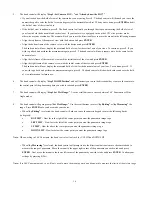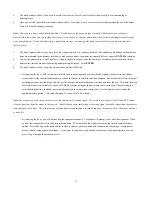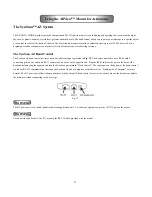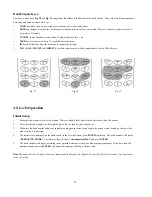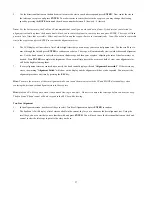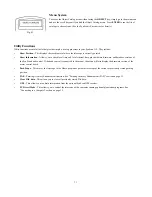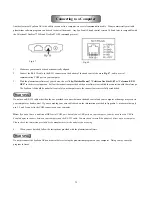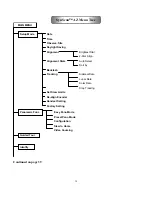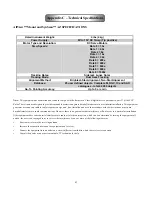
29
Pointing Accuracy Enhancement (PAE)
Both the star alignment methods provide alignment adequate for any visual observing purpose. For applications that require extra high
precision in a particular part of the sky, the SynScan AZ provides a Pointing Accuracy Enhancement (PAE) function to further improve
accuracy.
1.
Use a go-to command to slew the telescope to a target in the area of sky where you want increased accuracy.
2.
Center the object in the eyepiece using the hand control directional keys.
3.
Press and hold down the
ESC
key for 2 seconds. The hand control will display
“Re-center”
and the name of the reference object
will appear on the LCD and blink three times. If the go-to command is sent from an external planetarium software through the
RS-232 cable, the hand control will display
“Last goto object”
instead of the name of the object.
4.
Make sure that the object is still in the center of the view and press
ENTER
. The SynScan AZ will record the amount of
correction required and will recalculate its model of the sky. The pointing accuracy in this particular part of the sky should be
greatly improved.
Hint: The result of the PAE is stored in the hand control even if the power has been turned off but will be erased if a new alignment
procedure is performed.
Object Databases in the SynScan AZ
The SynScan AZ comes with a vast database with over 42,900 celestial objects all in the palm of your hand. This database includes
selections from the following popular catalogs:
•
Solar System
– The 7 planets of our solar system, plus the Moon and Pluto.
•
Named Star
– A list of 212 best known stars from the SynScan AZ database
•
NGC
– 7,840 of the brightest deep sky objects from the Revised New General Catalog
•
IC
– 5,386 of standard stars and deep sky objects from the Indexed Catalog
•
Messier
– Complete list of 110 Messier objects
•
Caldwell
– Complete list of 109 Caldwell objects
•
Double Stars
– Includes 55 well-known double stars
•
Variable Stars
– Includes 20 well-known variable stars
•
SAO
– Includes 29,523 stars


